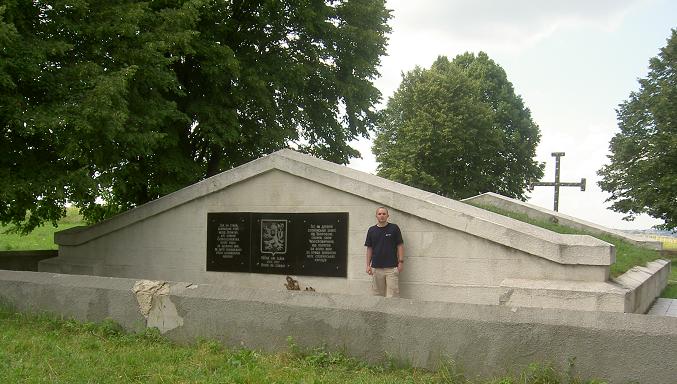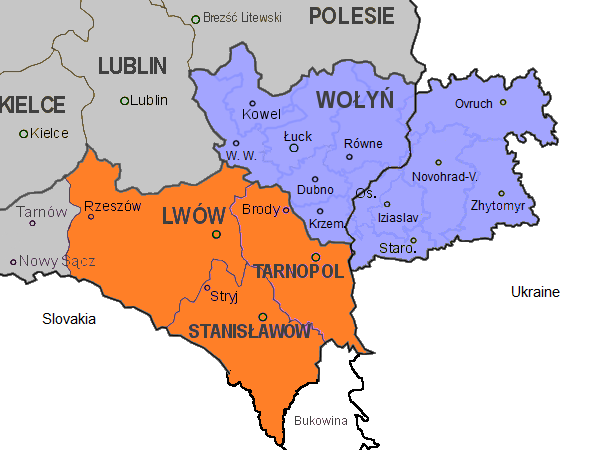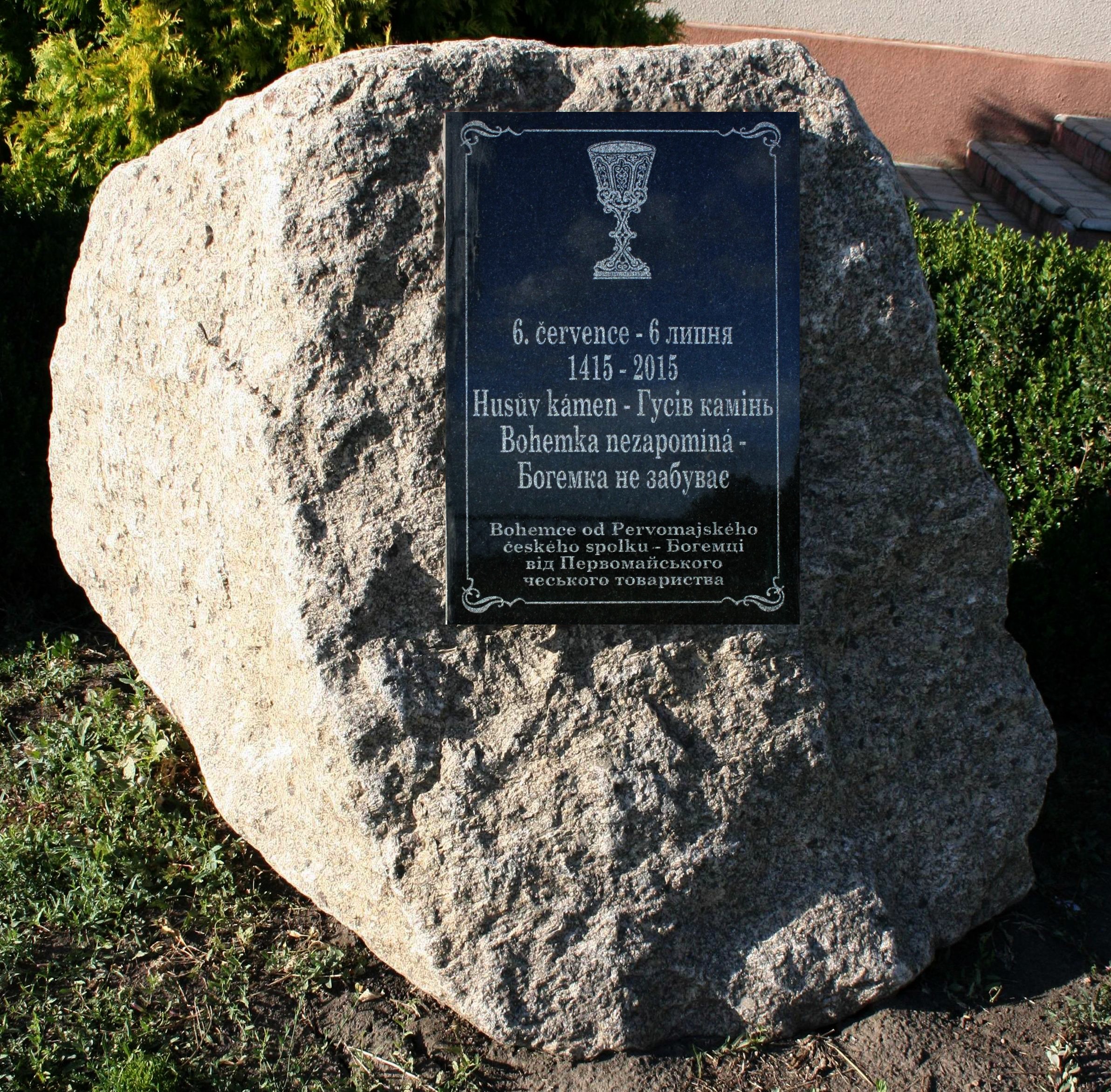Czechs in Ukraine on:
[Wikipedia]
[Google]
[Amazon]
Czechs in Ukraine, often known as Volhynian Czechs (
 Outside Volhynia, in 1905 the Czechs founded the village of Bohemka, nowadays part of the
Outside Volhynia, in 1905 the Czechs founded the village of Bohemka, nowadays part of the
 After the Soviet-Polish War, which ended in 1921 with the defeat of the Red Army, Volhynia was divided. The western half was recovered by
After the Soviet-Polish War, which ended in 1921 with the defeat of the Red Army, Volhynia was divided. The western half was recovered by
 After the liberation of Czechoslovakia, the Volhynian Czechs who were members of the Czechoslovak brigades remained. After the war, the door of re-emigration for Volhynian Czechs to Czechoslovakia opened on the basis of an interstate agreement between the
After the liberation of Czechoslovakia, the Volhynian Czechs who were members of the Czechoslovak brigades remained. After the war, the door of re-emigration for Volhynian Czechs to Czechoslovakia opened on the basis of an interstate agreement between the
Sdružení Čechů z Volyně a jejich přátel
Volyňští Češi
Volyňští Češi na Krnovsku
NEŠPOROVÁ, Olga; Proměny religiozity volyňských Čechů; časopis Lidé města, 2005
{{Portal bar, Czech Republic, Ukraine Czech diaspora Volhynia Ethnic groups in Ukraine
Czech
Czech may refer to:
* Anything from or related to the Czech Republic, a country in Europe
** Czech language
** Czechs, the people of the area
** Czech culture
** Czech cuisine
* One of three mythical brothers, Lech, Czech, and Rus'
Places
* Czech, ...
: ''Volyňští Češi''), are ethnic Czechs
The Czechs ( cs, Češi, ; singular Czech, masculine: ''Čech'' , singular feminine: ''Češka'' ), or the Czech people (), are a West Slavic ethnic group and a nation native to the Czech Republic in Central Europe, who share a common ancestry, ...
or their descendants settled mostly in the Volhynia
Volhynia (also spelled Volynia) ( ; uk, Воли́нь, Volyn' pl, Wołyń, russian: Волы́нь, Volýnʹ, ), is a historic region in Central and Eastern Europe, between south-eastern Poland, south-western Belarus, and western Ukraine. The ...
region of Ukraine
Ukraine ( uk, Україна, Ukraïna, ) is a country in Eastern Europe. It is the second-largest European country after Russia, which it borders to the east and northeast. Ukraine covers approximately . Prior to the ongoing Russian inv ...
, in the second half of the 19th century.
History
Between 1868 and 1880, almost 16,000 Czechs leftAustria-Hungary
Austria-Hungary, often referred to as the Austro-Hungarian Empire,, the Dual Monarchy, or Austria, was a constitutional monarchy and great power in Central Europe between 1867 and 1918. It was formed with the Austro-Hungarian Compromise of ...
for the Russian Empire
The Russian Empire was an empire and the final period of the Russian monarchy from 1721 to 1917, ruling across large parts of Eurasia. It succeeded the Tsardom of Russia following the Treaty of Nystad, which ended the Great Northern War. ...
. The reasons for their departure were the difficult living conditions in the Czech lands, and the rumors of prosperity in the Russian realm, where there was a large amount of unused agricultural land. After the collapse of the Polish January Uprising against Russian rule (Volhynia was part of Poland
Poland, officially the Republic of Poland, is a country in Central Europe. It is divided into 16 administrative provinces called voivodeships, covering an area of . Poland has a population of over 38 million and is the fifth-most populou ...
prior to the Second and Third Partition of Poland
The Third Partition of Poland (1795) was the last in a series of the Partitions of Poland–Lithuania and the land of the Polish–Lithuanian Commonwealth among Prussia, the Habsburg monarchy, and the Russian Empire which effectively ended Polis ...
, carried out in 1793 and 1795, respectively), harsh reprisals against the Poles
Poles,, ; singular masculine: ''Polak'', singular feminine: ''Polka'' or Polish people, are a West Slavic nation and ethnic group, who share a common history, culture, the Polish language and are identified with the country of Poland in C ...
followed. The Russian government imposed taxes on Polish landed gentry
Polish landed gentry ( pl, ziemiaństwo, ziemianie, from ''ziemia'', "land") was a social group or class of hereditary landowners who held manorial estates. Historically, ''ziemianie'' consisted of hereditary nobles (''szlachta'') and landed com ...
or even confiscated Polish estates. The local government in the region attracted new immigrants with a number of advantages, such as the right to purchase their own land for low prices, and the establishment of manufacturing businesses. Also, they gave the migrants the right to national education, self-government and religious freedom. Immigrants were exempt for 20 years from tax, and exonerated from military duty.
The bulk of the Czechs settled in the region of Volhynia
Volhynia (also spelled Volynia) ( ; uk, Воли́нь, Volyn' pl, Wołyń, russian: Волы́нь, Volýnʹ, ), is a historic region in Central and Eastern Europe, between south-eastern Poland, south-western Belarus, and western Ukraine. The ...
. Some villages were set up in flat meadows, while others were located near existing Ukrainian villages. Local Czech names for the villages they lived in were formed from the original name of the village, which was supplemented with the word "Czech" (eg České Noviny, Český Malín, Český Boratín, Český Straklov, etc.) Apart from agriculture, Czech immigrants began to engage in other activities, such as industry, trade and crafts. The income for most ethnic Czechs had its foundations in the engineering, breweries, mills, cement plants, etc. In their communities, schools, churches, and libraries were founded, and because of this, cultural and social life flourished. Czech immigrants have made a major contribution to increasing the economic and cultural level in the built-up areas.
 Outside Volhynia, in 1905 the Czechs founded the village of Bohemka, nowadays part of the
Outside Volhynia, in 1905 the Czechs founded the village of Bohemka, nowadays part of the Mykolaiv Oblast
Mykolaiv Oblast ( uk, Микола́ївська о́бласть, translit=Mykoláyivsʹka óblastʹ, ), also referred to as Mykolaivshchyna ( uk, Микола́ївщина, Mykoláivshchyna, ) is an oblast (province) of Ukraine. The administra ...
.
After the outbreak of World War I
World War I (28 July 1914 11 November 1918), often abbreviated as WWI, was one of the deadliest global conflicts in history. Belligerents included much of Europe, the Russian Empire, the United States, and the Ottoman Empire, with fightin ...
, Volhynian Czechs fought as members of the Russian army in the so-called Czech League, which later became the birthplace of the Czech legions in Russia to come.PRECLÍK, Vratislav. Masaryk a legie (Masaryk and legions), váz. kniha book, 219 pages, first issue - press vydalo nakladatelství Paris Karviná, Žižkova 2379 (734 01 Karviná-Mizerov, Czechia) ve spolupráci s Masarykovým demokratickým hnutím (In association with the Masaryk Democratic Movement), 2019, .
Interwar period
 After the Soviet-Polish War, which ended in 1921 with the defeat of the Red Army, Volhynia was divided. The western half was recovered by
After the Soviet-Polish War, which ended in 1921 with the defeat of the Red Army, Volhynia was divided. The western half was recovered by Poland
Poland, officially the Republic of Poland, is a country in Central Europe. It is divided into 16 administrative provinces called voivodeships, covering an area of . Poland has a population of over 38 million and is the fifth-most populou ...
, while the eastern part became part of the newly established Soviet Union
The Soviet Union,. officially the Union of Soviet Socialist Republics. (USSR),. was a List of former transcontinental countries#Since 1700, transcontinental country that spanned much of Eurasia from 1922 to 1991. A flagship communist state, ...
. While the Czech villages on the Polish side gradually renewed and modernized, the populations of the villages in Ukraine became victims of the violent national policy of the Soviet government. They limited Czech education, culture and religion. Many lost their property, and were violently forced out of their homes by kolkhoz
A kolkhoz ( rus, колхо́з, a=ru-kolkhoz.ogg, p=kɐlˈxos) was a form of collective farm in the Soviet Union. Kolkhozes existed along with state farms or sovkhoz., a contraction of советское хозяйство, soviet ownership or ...
s. Representatives mainly touched upon the Czech intelligentsia, but did not escape any component of the population. Many Volhynian Czechs were sentenced to death, or were virtually so in the gulags - which happened to many minorities at the time. In 1938, a complete ban on teaching in or about the Czech language was issued.
Volhynian Czechs were the largest group of the Czechs in interbellum Poland. One of their main centers was Kvasyliv
Kvasyliv ( uk, Квасилів; pl, Kwasiłów) is an urban-type settlement in Rivne Raion (district) of Rivne Oblast (province) in western Ukraine. Population: Kvasyliv was first founded in 1445, and it acquired the status of an urban-type se ...
. In the 1930s, as a result of Polish–Czechoslovak border conflicts
Border conflicts between Poland and Czechoslovakia began in 1918 between the Second Polish Republic and First Czechoslovak Republic, both freshly created states. The conflicts centered on the disputed areas of Cieszyn Silesia, Orava Territor ...
, Czechs also experienced trouble in Poland, where anti-Czech propaganda was distributed by the government. This resulted in the demands of the Polish population to liquidate Czech education, or to withdraw land from Czech peasants.
World War II
When the Soviet Union occupied eastern Poland in 1939, the two parts of Volhynia were reunited. However, it was occupied byNazi Germany
Nazi Germany (lit. "National Socialist State"), ' (lit. "Nazi State") for short; also ' (lit. "National Socialist Germany") (officially known as the German Reich from 1933 until 1943, and the Greater German Reich from 1943 to 1945) was ...
in 1941. In July 1942, the first Czechoslovak Independent Field Battalion was formed. In 1943, the 1st Czechoslovak Independent Brigade was established, which numbered 3,517 soldiers. Volhynian men who fought in the ranks of the Red Army, but also those who were in Soviet captivity, reported themselves to these troops. Some of them even left to fight with Czech units in Western Europe, as many escaped Polish troops did as well. The situation of Volhynian Czechs living in villages under the German occupation administration did not change much. The Soviet violence was replaced by violence of the Ukrainian Nationalist Organization, but especially that of the SS, who burned several villages and massacred the local population. On July 13, 1943, the Germans burned village of Český Malín to the ground, with people including the elderly, women and children being burned alive in the buildings. In total, there were 374 Czech citizens. In the autumn of the same year, the Nazis were murdered by another Czech village, Sergiyevka-Mikna. In March 1944 the Czechs to the resort Volyňských Rovno relocated to the First Czechoslovak Independent Brigade, which recruited former compatriots. 12,000 Volhynian Czechs entered the troops, including six hundred women. Thanks to this, the First Czechoslovak Army Corps, which had passed the battle route to Prague, became the brigade.
May 1945 and the following years
 After the liberation of Czechoslovakia, the Volhynian Czechs who were members of the Czechoslovak brigades remained. After the war, the door of re-emigration for Volhynian Czechs to Czechoslovakia opened on the basis of an interstate agreement between the
After the liberation of Czechoslovakia, the Volhynian Czechs who were members of the Czechoslovak brigades remained. After the war, the door of re-emigration for Volhynian Czechs to Czechoslovakia opened on the basis of an interstate agreement between the Czechoslovak Socialist Republic
The Czechoslovak Socialist Republic, ČSSR, formerly known from 1948 to 1960 as the Czechoslovak Republic or Fourth Czechoslovak Republic, was the official name of Czechoslovakia from 1960 to 29 March 1990, when it was renamed the Czechoslovak ...
and the Soviet Union
The Soviet Union,. officially the Union of Soviet Socialist Republics. (USSR),. was a List of former transcontinental countries#Since 1700, transcontinental country that spanned much of Eurasia from 1922 to 1991. A flagship communist state, ...
. The first transport was welcomed in Žatec
Žatec (; german: Saaz) is a town in Louny District in the Ústí nad Labem Region of the Czech Republic. It has about 19,000 inhabitants. It lies on the Ohře river. The town centre is well preserved and is protected by law as an urban monumen ...
at the beginning of 1947, when Czechoslovakia began to come not only to those who lived in the USSR but also to those who returned from forced labor on the former territory of the Third Reich. In total, there were approximately 40,000 people. Most of them were settled in territories from which the Sudeten Germans had been expelled. Many Volhynian Czechs gave information about life in the Soviet Union, and warned about the setting up of kolkhozes, etc. After Czechoslovakia became a formally communist nation in 1948, Ukrainian Czech truth-sayers were persecuted. Some Volhynian Czechs remained in the Soviet Union even after the end of the Second World War. Of those who did not emigrate, a great majority were in inter-ethnic marriages - which thus did not allow them to leave. Mostly, they were women with ethnic Ukrainian husbands. Some others stayed of their own choice.
During the Soviet era, they were one of the most affected groups by the Chernobyl nuclear power plant disaster in 1986. At the end of the 1980s, ten thousand Czechs lived in Ukraine. At the beginning of the 90s Czechoslovakia invited these remaining Czechs to return to the Czech Republic
The Czech Republic, or simply Czechia, is a landlocked country in Central Europe. Historically known as Bohemia, it is bordered by Austria to the south, Germany to the west, Poland to the northeast, and Slovakia to the southeast. The ...
, which in 1993 almost 2,000 people did, and other people came to the Czech Republic in later years. As of today, Volhynian Czechs are still migrating.
In 2014, after the "revolution" in Ukraine and the occupation of Crimea
Crimea, crh, Къырым, Qırım, grc, Κιμμερία / Ταυρική, translit=Kimmería / Taurikḗ ( ) is a peninsula in Ukraine, on the northern coast of the Black Sea, that has been occupied by Russia since 2014. It has a pop ...
by Russia, some of the Volhynian Czechs from the Zhytomyr
Zhytomyr ( uk, Жито́мир, translit=Zhytomyr ; russian: Жито́мир, Zhitomir ; pl, Żytomierz ; yi, זשיטאָמיר, Zhitomir; german: Schytomyr ) is a city in the north of the western half of Ukraine. It is the administrative ...
region expressed their interest in returning to their native homeland.
See also
* Czech Republic–Ukraine relationsReferences
External links
Sdružení Čechů z Volyně a jejich přátel
Volyňští Češi
Volyňští Češi na Krnovsku
NEŠPOROVÁ, Olga; Proměny religiozity volyňských Čechů; časopis Lidé města, 2005
{{Portal bar, Czech Republic, Ukraine Czech diaspora Volhynia Ethnic groups in Ukraine